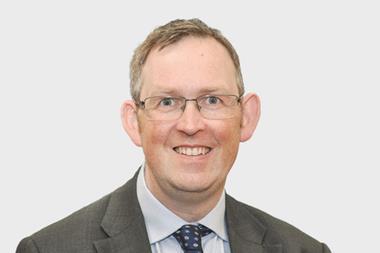The number of UK defined benefit (DB) pension schemes continues to shrink at a consistent rate, according to the annual landscape report from The Pension Regulator (TPR).
The Occupational defined benefit (DB) landscape in the UK 2023 report provides an overview of the occupational DB and hybrid pension landscape in the UK, reporting on scheme status, membership levels and assets under management.
As part of an ongoing programme of improvement, TPR said it has enhanced its methodology with heightened validation of the data it receives from its annual scheme return. These improvements have resulted in revisions to scheme status statistics which better reflect the current DB landscape.
The new data shows that the number of DB schemes reduced by 2% in 2023, from 5,378 to 5,297.
The percentage of schemes closed to future accrual, excluding those in wind-up, has risen from 70% to 72%.
It also shows that scheme funding levels have improved since 2022, with the number of schemes with 100% or greater technical provision funding levels increased from 2,565 to 3,620. The total deficit has more than halved, reducing from £63bn to £28bn
TPR’s interim director of regulatory policy, analysis and advice, Lou Davey, said: “Today’s report gives an important overview of the DB landscape, which has more than 9.6 million memberships. Changes in scheme status have been small year-on-year but the trend of a contracting market continues.”
She said that this year TPR has reviewed how data for this report is gathered and analysed, resulting in notable changes to some of its figures. She added that historical data for the report has also been reviewed and, where necessary, revised.
“As a data-focused and digitally-enabled regulator, we are reviewing how we collect, analyse and provide information. This data informs our approach and continues to underline the importance of schemes having long-term plans in place as they mature,” Davey stated.
Benefits of consolidation
Andrew Goddard, partner at Isio, said that with the DB market shrinking as funding levels improve trustees and sponsors are facing “crucial decisions” around optimal management of assets and liabilities and are increasingly realising the benefits of consolidation.
“The Regulator recently launched its new general code of practice and suggested some DB savers might benefit from higher standards of governance in a consolidation arrangement,” he said.
“Trustees and sponsors are considering consolidation not just to improve efficiencies and better protect member interests, but also because it is often the stepping stone they need to secure their preferred end-game solution,” Goddard continued.
He added that if a scheme is nearing buyout, it can often be challenging in the current market to be noticed by insurers.
He said that smaller DB schemes can benefit from the scale and status offered by a consolidator with a proven track record, which can help them cross the final hurdle. Schemes further away from buyout might face more challenges to get there, Goddard noted.
He said: “For these schemes, joining a consolidator earlier on could ease some of the obstacles over the long-term – allowing them to streamline their path to full funding status and secure member benefits with greater certainty.”
Laura McLaren, head of DB actuarial consulting at Hymans Robertson, pointed out that TPR’s report shows that 73% of all DB pension schemes are estimated to be in surplus on a funding basis, compared with just 50% the year before. With the average scheme funding level estimated to be up by 13.5% percentage points to 114.5% in just 12 months.
She said: “Under the Mansion House reforms we anticipate a consultation landing shortly on how schemes might generate and use surpluses investing more in productive assets. With the statistics confirming only a minority – less than 4% – of DB schemes remain open to new members, now is the time for policymakers to look properly at longer term pensions strategy.”
In the meantime, she McLaren that TPR and the Department for Work and Pensions are “wrangling to make sure the final regulations and funding code are fit for purpose and proportionate given that there is now a very small, and reducing, number of poorly funded schemes.”
Read the digital edition of IPE’s latest magazine











































No comments yet